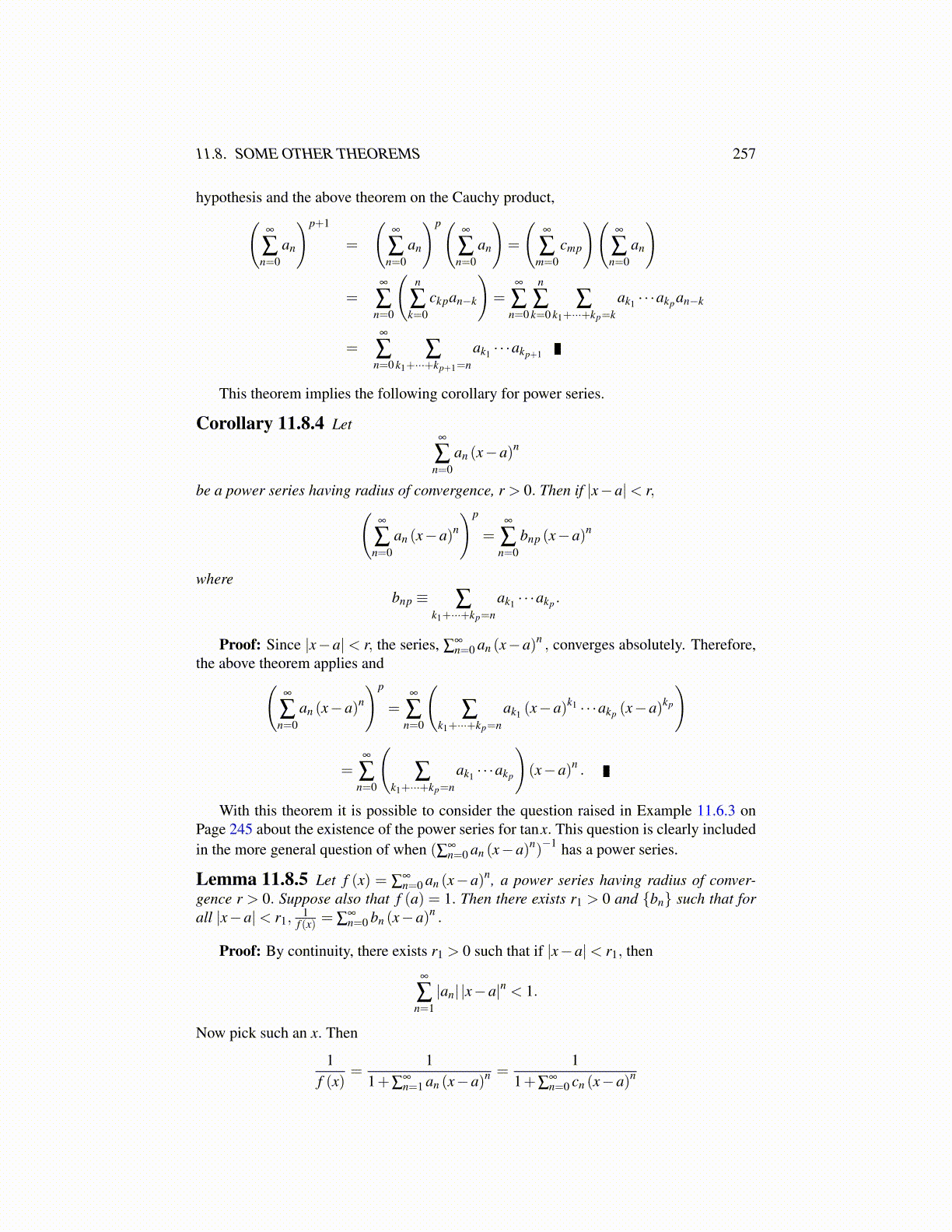
11.8. SOME OTHER THEOREMS 257
hypothesis and the above theorem on the Cauchy product,(∞
∑n=0
an
)p+1
=
(∞
∑n=0
an
)p(∞
∑n=0
an
)=
(∞
∑m=0
cmp
)(∞
∑n=0
an
)
=∞
∑n=0
(n
∑k=0
ckpan−k
)=
∞
∑n=0
n
∑k=0
∑k1+···+kp=k
ak1 · · ·akpan−k
=∞
∑n=0
∑k1+···+kp+1=n
ak1 · · ·akp+1
This theorem implies the following corollary for power series.
Corollary 11.8.4 Let∞
∑n=0
an (x−a)n
be a power series having radius of convergence, r > 0. Then if |x−a|< r,(∞
∑n=0
an (x−a)n
)p
=∞
∑n=0
bnp (x−a)n
wherebnp ≡ ∑
k1+···+kp=nak1 · · ·akp .
Proof: Since |x−a|< r, the series, ∑∞n=0 an (x−a)n , converges absolutely. Therefore,
the above theorem applies and(∞
∑n=0
an (x−a)n
)p
=∞
∑n=0
(∑
k1+···+kp=nak1 (x−a)k1 · · ·akp (x−a)kp
)
=∞
∑n=0
(∑
k1+···+kp=nak1 · · ·akp
)(x−a)n .
With this theorem it is possible to consider the question raised in Example 11.6.3 onPage 253 about the existence of the power series for tanx. This question is clearly includedin the more general question of when (∑∞
n=0 an (x−a)n)−1 has a power series.
Lemma 11.8.5 Let f (x) = ∑∞n=0 an (x−a)n, a power series having radius of conver-
gence r > 0. Suppose also that f (a) = 1. Then there exists r1 > 0 and {bn} such that forall |x−a|< r1,
1f (x) = ∑
∞n=0 bn (x−a)n .
Proof: By continuity, there exists r1 > 0 such that if |x−a|< r1, then
∞
∑n=1
|an| |x−a|n < 1.
Now pick such an x. Then
1f (x)
=1
1+∑∞n=1 an (x−a)n =
11+∑
∞n=0 cn (x−a)n